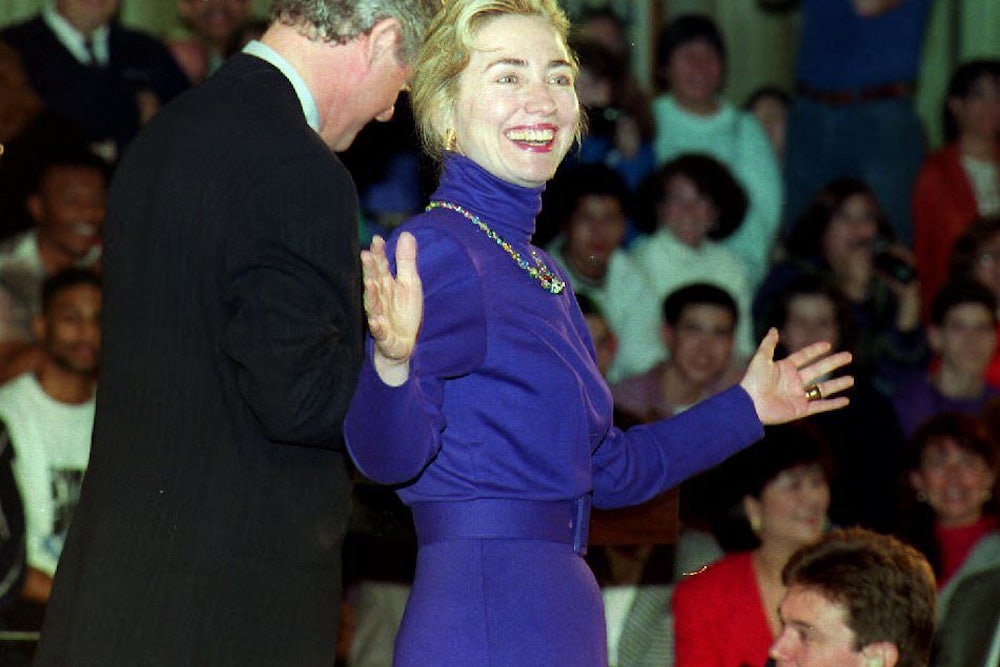The final week of the Republican primary was essentially a formality, but in hindsight an exceptionally important formality.
As long as Donald Trump still had to go through the motions to fend off candidates whose campaigns had been reduced to simulacra, and as long as his opponents were clinging to the hope of defeating him at the GOP convention, their combat served as a kind of permission for reporters to treat Trump’s campaign as the anomaly that it was.
On the eve of the fateful Indiana primary, when Trump infamously and speciously linked Ted Cruz’s father, Rafael, to the assassination of John F. Kennedy, The Washington Post ran a story headlined, “How on earth is the media supposed to cover Trump’s wacky JFK-Cruz conspiracy theory?” Glenn Kessler, who writes the Post’s fact checker column, gave Trump all four of his dreaded Pinocchios. Even the Post’s straight news piece about the supposed Cruz/Lee Harvey Oswald connection lead with an incredulous dependent clause, describing Trump as “Never one to shy away from discussing unsubstantiated tabloid fodder …”
In theory, debunking political whoppers is what the press is supposed to do, but in practice, things aren’t usually so straightforward. Politicians control access to themselves and their privileged information, which gives them outsize control over who breaks news. With their parties and supporters behind them, they can freeze out adversarial reporters and dismiss accusations of dishonesty as media bias. But in Trump’s case, reporters weren’t the lone arbiters of truth during the primaries. Other Republicans participated, too. Ted Cruz called Trump an “utterly amoral” “pathological liar,” a “narcissist” and a “bully.” The press wasn’t adjudicating Trump’s claims so much as they were relaying a cross-ideological consensus that Trump was unglued.
Just a few hours after he addressed the JFK conspiracy theory, Cruz suspended his campaign and the dynamic between the press and Trump changed. Leading Republicans stopped calling Trump a liar and trying to deny him their party’s nomination. In embracing Trump, they essentially rescinded their permission to the press to treat him as an outlier.
Reporters now face a choice between reimagining Trump as a partisan mirror image of Hillary Clinton, or drawing the ire of the broader GOP. Trump can’t become president unless he comes to be seen as on a par with Clinton, and that can’t happen without the assent of the media. So far the media hasn’t granted it, but we’ve seen scattered indicia of how it might happen.
When Trump swung into general-election mode and indulged the horrific lie, fixated upon by conservative media more than twenty years ago, that the Clintons may have murdered Vince Foster (a Clinton ally who killed himself shortly after joining the White House counsel’s office), the Post rightly described Foster’s suicide as “the focus of intense and far-fetched conspiracy theories on the Internet.” But the same article essentially baptized Trump’s tactics as part of the normal give-and-take of partisan campaigning:
The presumptive Republican nominee and his associates hope that his tactics will bring fresh scrutiny to the Clintons’ long record in public life, which conservatives characterize as defined by scandals that her allies view as witch hunts. Through social media and Trump’s ability to garner unfiltered attention on the Internet and the airwaves, political strategists believe he could revitalize the controversies among voters who do not remember them well or are too young to have lived through them.
Trump’s approach would be perfectly reasonable but for the fact that the “scandals” he has resurfaced have all been either roundly debunked or, in the case of Hillary supposedly enabling Bill’s sexual indiscretions, merited no respectful hearing to begin with.
What Trump and his allies really hope is that they can hoodwink first-time voters or people who weren’t paying close attention back in the 1990s into believing known lies. Only the media can prevent this—but with Trump as GOP nominee, and party leaders rallying behind him, the media suddenly faces fresh incentives not to intervene, and they will become harder to resist over time.
It is possible, even in the context of a general-election campaign, to treat Trump’s embrace of widely discredited Clinton attacks responsibly. The Post, even as it was presenting Trump’s myth-based campaign strategy as a neutral matter in its news pages, ran a story by Foster’s sister, scolding Trump for revisiting “untold pain” on the Foster family, and Kessler gave Trump another four Pinocchios.
Meanwhile, CNN’s Jake Tapper set a standard for reporters who have to cover Trump’s pronouncements, but don’t want to lend credence to false claims, by calling the Foster insinuations “ridiculous and frankly shameful.”
“This is not an anti-Trump position or a pro-Clinton position,” Tapper said. “It’s a pro-truth position.”
The trouble is that unless a critical mass of media figures agrees to treat the things Trump exhumes from the fever swamps of the 1990s with the appropriate contempt, Trump will enjoy the benefit of the doubt most major-party nominees expect. It was easy for reporters to treat Trump adversarially, without fear or favor, when other Republicans were begging them to scrutinize him. Just three weeks later, the same kind of scrutiny presents those reporters with a collective action problem—by admonishing Trump, they might find themselves at a disadvantage to peers who choose to remain in the good graces of both campaigns. And if enough of them are cowed into treating the 20-year-old contents of The American Spectator as fair-game politics, Trump’s plan to dupe the young and forgetful will succeed.
